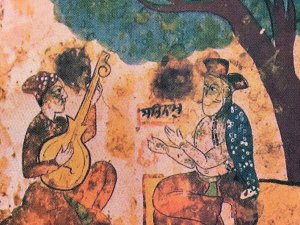The Process of Translating Sukhmani Sahib ~ Part 1
Ek Ong Kaar Kaur Khalsa
Wahe Guru Ji Ka Khalsa, Wahe Guru Ji Ki Fateh.
Jason Porath of the rejectedprincesses.com website gave a brilliant Ted talk some years ago about how important it is, in the Information Age, to show your work. We consume so much information every day, that it is easy to forget how much effort goes into creating something artistic.
The process of translating Guru Arjan's Sukhmani Sahib took me about eight years to do. So, I wanted to share with all of you the steps that I went through to translate Sukhmani Sahib, complete with pictures.
How does an Irish-Italian American girl who grew up in South Jersey and South Texas even begin to approach a sacred language like Gurmukhi? The answer? Very carefully!!!
First you have to understand that I do everything by hand. At the end of the day, during the twilight hours, when Sikhs traditionally recite Rehiras Sahib, I sit on my couch in my living room and write and write and write.
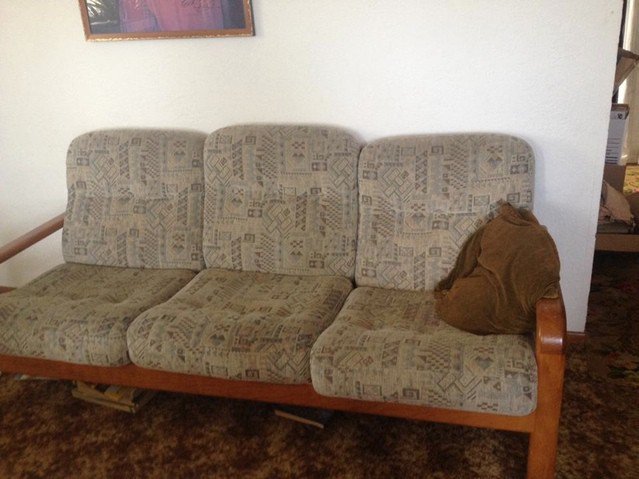
For me, translating Gurmukhi needs a tactile experience. I chose pens for the project that I do not use for anything else. And I make sure that every piece of paper is respected by either using high quality blank books, or large binders, to store the work.
Literal Meaning
Step one, of course, is fairly straight forward. What does each word in Gurmukhi mean, at the most literal level? To do this, I hand write the Gurmukhi words, and use various dictionaries and other sources to look up the literal meaning. Then I write the literal meaning below the Gurmukhi. Sometimes, for fun, I use different colored pens for this process.
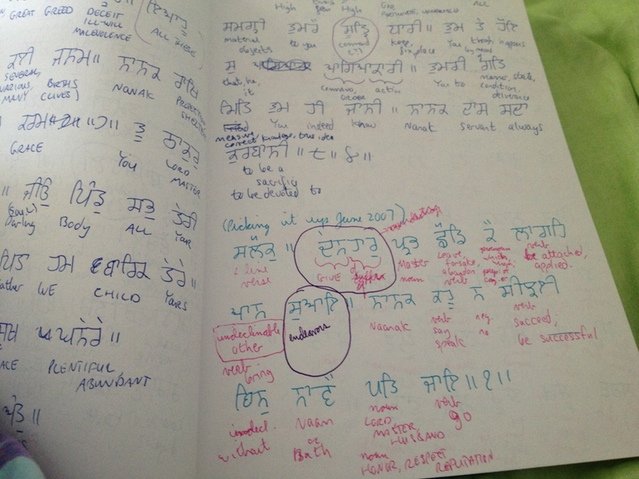
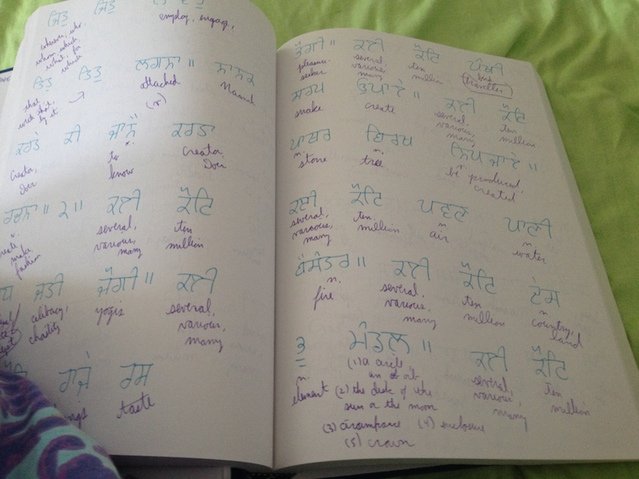
During this phase, I will also do some research, including researching the teachings of the Siri Singh Sahib, Yogi Bhajan, to see what special insights I can learn when it comes to particular terms in Gurbani or the overall meaning and power of a bani.
Rough First Draft
After all of the vocabulary work is finished, I do a very rough first draft. The purpose of the first draft is not to make anything look nice or sound nice. But it is me testing myself about whether I actually understand what the line is saying. Have I understood the grammar? Is the meaning clear? The poetry is fairly awful at this point, frankly, but it is like a blueprint. What lines do I understand? What lines do I not understand?

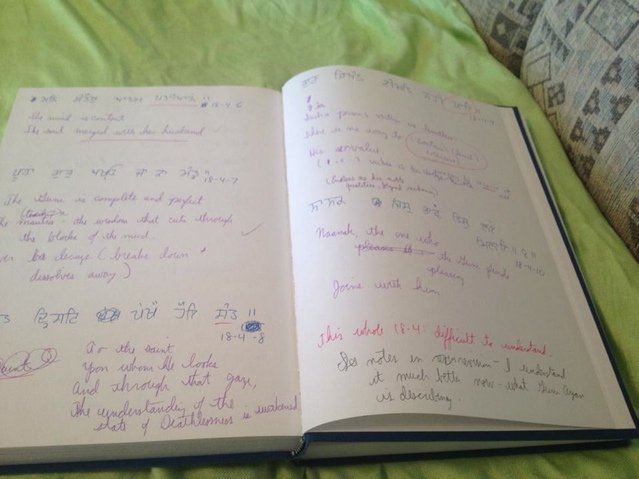
Here you can see the process of writing the Gurmukhi first and the rough draft under each line. This took about a year to do.
More Research
Once this very rough first draft is done, I have a good idea about what makes sense and what does not. Identifying the lines whose meaning eludes me, I begin to do further research. That research may involve looking at other translations, reading books,or consulting with scholars, such as Dr. Balkar Singh, who lived in Espanola, New Mexico for some time and who served as the head of the Siri Guru Granth Sahib department in Punjabi University, in Patiala, India. I will write the lines out, and make notes about meaning and grammar. Did I get the vocabulary wrong? What nuance am I missing?
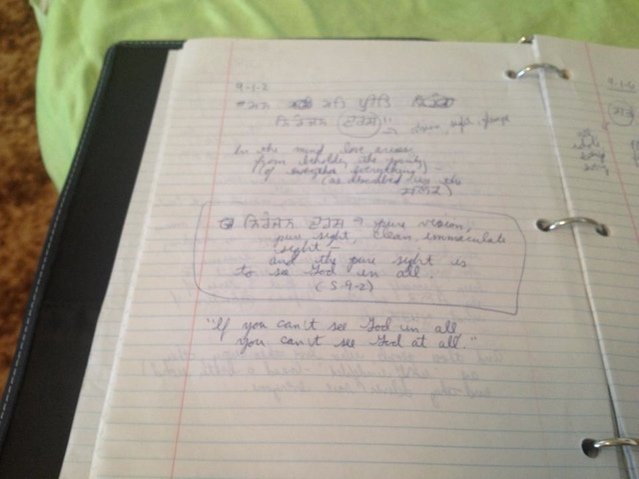
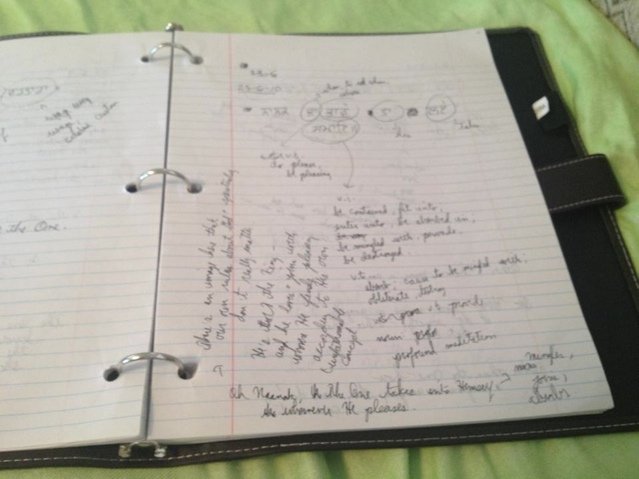
Here are pictures of the note books and binders of doing that research.
The time between finishing the first rough draft and getting all those questions answered for myself took a little over a year.
All of this is the foundation work that I need to do before I feel confident to begin the translation, or poetic interpretation, in earnest.
Here is a picture of all the books and binders for this portion of Sukhmani Sahib. All told, this part of the process took around three and a half to four years to do.
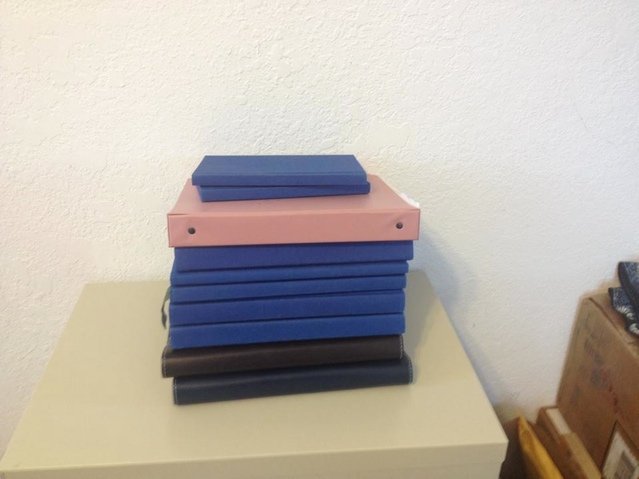
It is my greatest blessing in this life to be able to do this work. Next week, I will share Part 2 of the article. If you have an interest in reserving a copy of this Sukhmani Sahib publication, you can do so by pledging $30 to the Kickstarter campaign that was started to help fund the costs of designing and printing the book. My hope and prayer is that you will enjoy reading this particular translation as much as I enjoyed the study and translation process.
With Divine Light,




